Introducción
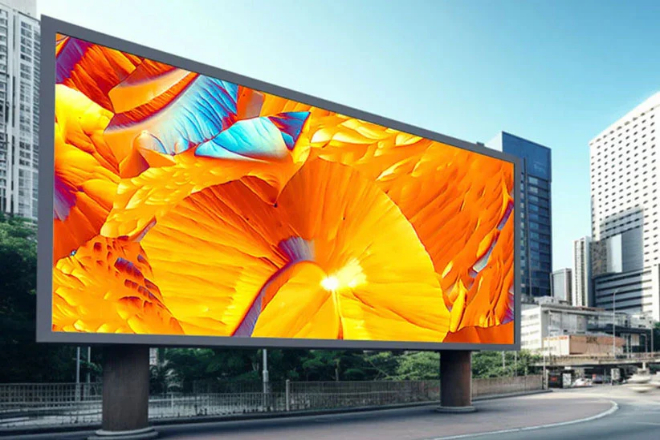
Como importante medio de transmisión de información, el rendimiento de la tecnología de visualización afecta directamente a la experiencia visual de las personas y a la eficiencia de la adquisición de información. La capacidad de reproducción del color, como indicador fundamental de la tecnología de visualización, también es un factor clave para medir la calidad de los equipos de visualización.
Desde los tradicionales CRT y LCD hasta los emergentes Pantalla LED Las pantallas LED y la tecnología de visualización están en constante innovación y la capacidad de reproducción del color también está aumentando. Entonces, ¿puede la capacidad de reproducción del color de las pantallas LED superar la tecnología de visualización tradicional? Encuentre la respuesta real en el artículo.
1. Comparación del principio de reproducción del color de la pantalla LED y la tecnología de visualización tradicional
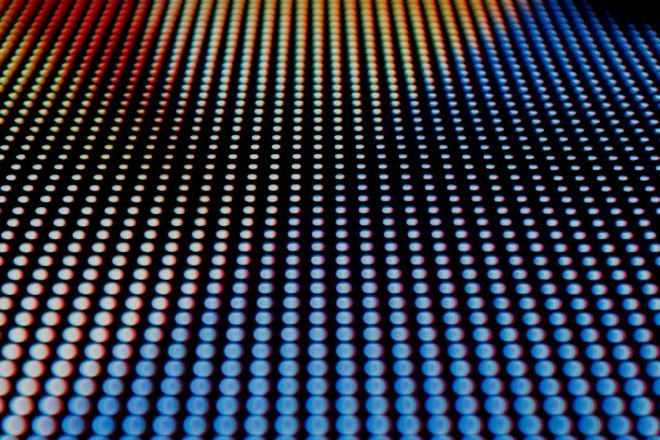
1) Principio de reproducción del color de la pantalla LED
El LED es un diodo emisor de luz. Es como una pequeña bombilla, pero su “filamento” está hecho de material semiconductor. Cuando se le aplica electricidad, los electrones que contiene se mueven y luego chocan con los agujeros para emitir luz. Las lámparas LED son muy eficientes, duraderas y, sobre todo, ahorran energía, por lo que ahora las podemos ver en todas partes.
Las pantallas LED en realidad están compuestas de muchas luces LED pequeñas, cada una de las cuales puede emitir luz roja, verde y azul.
Piénsalo: si encendemos las luces roja, verde y azul y podemos ajustar el brillo, podemos ajustar todo tipo de colores, ¿verdad? Al igual que una paleta de colores, el rojo, el verde y el azul son los tres colores primarios y pueden ajustarse a cualquier color que deseen.
1.2) Analizar las ventajas de las pantallas LED en cuanto a saturación de color, brillo, contraste, etc.
- Saturación de color:
Los colores de las pantallas LED son particularmente brillantes, como el arcoíris que vemos. Esto se debe a que la luz roja, verde y azul que emiten las luces LED son muy puras, por lo que los colores ajustados también son muy positivos.
Las pantallas LED son especialmente brillantes porque las luces LED emiten luz por sí mismas y no requieren fuentes de luz adicionales, por lo que incluso en un entorno muy brillante se puede ver claramente el contenido en la pantalla.
- Contraste:
El contraste entre el blanco y el negro de las pantallas LED es particularmente evidente, al igual que la diferencia entre la noche y el día. Esto se debe a que la luz LED se puede apagar por completo, por lo que cuando se muestra en negro, es realmente negro, no un poco gris como otras pantallas.
2) El principio de reproducción del color de la tecnología de visualización tradicional
- CRT (tubo de rayos catódicos):
La pantalla CRT es como un televisor antiguo. Tiene un cañón de electrones en su interior. Emite un haz de electrones que luego es desviado por el campo magnético y finalmente llega a la pantalla fluorescente, que luego emite luz.
En la pantalla fluorescente hay fósforos de tres colores: rojo, verde y azul. La luz del color que incide el haz de electrones se iluminará para que se puedan mostrar varios colores. Sin embargo, las pantallas CRT son poco comunes hoy en día porque son demasiado grandes, consumen demasiada energía y tienen una vida útil corta.
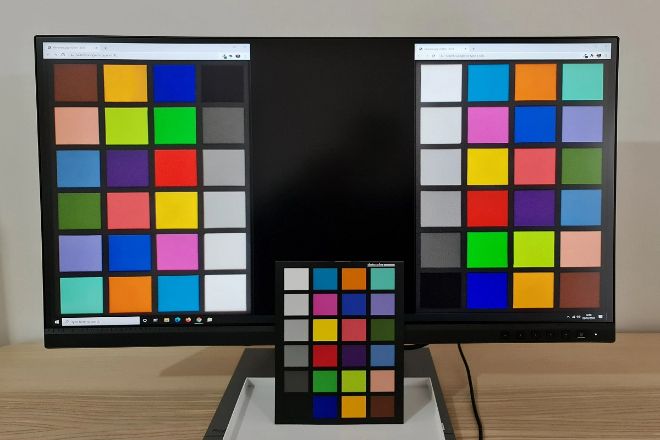
- LCD (pantalla de cristal líquido):
La pantalla LCD es como una ventana mágica. Tiene una capa de cristal líquido en su interior. Las moléculas de cristal líquido cambiarán su disposición bajo la acción del campo eléctrico, controlando así la transmisión de la luz.
Sin embargo, el cristal líquido en sí no emite luz, por lo que se necesita una capa de retroiluminación para proporcionar una fuente de luz. La capa de retroiluminación es como una pequeña bombilla.
Emite luz blanca, que luego se convierte en luz roja, verde y azul a través de un filtro de color. Luego, mediante cambios en la disposición de las moléculas de cristal líquido, se pueden mostrar varios colores.
2.1) Compare las diferencias en el rendimiento del color entre estas tecnologías y las pantallas LED
- Saturación de color:
Los colores de las pantallas LED son tan brillantes como los caramelos arcoíris que comemos, mientras que los colores de las pantallas LCD son como caramelos arcoíris lavados, que están un poco descoloridos. Esto se debe a que la luz emitida por las lámparas LED es más pura, por lo que los colores ajustados también son más correctos.
- Brillo:
Las pantallas LED son como un pequeño sol, que es muy brillante, mientras que las pantallas LCD son como una pequeña lámpara de escritorio, y el brillo no es tan alto. Esto se debe a que las lámparas LED emiten luz por sí mismas y no requieren fuentes de luz adicionales, por lo que son más brillantes.
- Contraste:
El contraste entre el blanco y el negro de las pantallas LED es tan evidente como la diferencia entre el día y la noche, mientras que las pantallas LCD son como un día nublado y el contraste entre el blanco y el negro no es tan evidente. Esto se debe a que las luces LED se pueden apagar por completo, por lo que cuando se muestra el color negro, es realmente negro.
En general, las pantallas LED son mucho mejores que las tecnologías de visualización tradicionales en términos de saturación de color, brillo y contraste, por lo que ahora podemos ver pantallas LED en muchos lugares, como vallas publicitarias, conciertos, estadios, etc.
2. ¿Cuáles son los rendimientos reales de la capacidad de reproducción del color de las pantallas LED?
1) Precisión del color
Las pantallas LED son realmente precisas en cuanto a la precisión del color. Al igual que las pantallas publicitarias que se ven en los centros comerciales de lujo, los colores que muestran son siempre tan brillantes y reales, como si el producto real estuviera justo frente a usted.
En realidad, esto se debe a que la pantalla LED ha sido calibrada profesionalmente y puede restaurar con precisión el color original.
Por ejemplo, una organización de reseñas realizó un experimento: tomó una foto a color y la mostró en una pantalla LED.
Al comparar la foto original, descubrieron que los colores eran casi exactamente iguales, con muy pocos errores, lo que demuestra que la precisión de color de la pantalla LED es realmente alta.
¿Cómo consigue la pantalla LED reproducir con tanta precisión los colores? De hecho, esto es inseparable de la calibración y la optimización.
Al igual que ajusta el televisor, la pantalla LED también necesita ajustar los parámetros como el brillo, el contraste y la saturación para que el color se vea más uniforme y preciso.
Además, algunas pantallas LED de alta gama ahora tienen sistemas automáticos de gestión del color que pueden ajustar automáticamente el color según el contenido que se está reproduciendo, haciendo que la imagen se vea más realista.
2) Gama cromática
La gama cromática es en realidad el concepto de rango de colores. Al igual que en el caso de una caja de lápices de colores, que contiene lápices de color rojo, amarillo, azul y otros, la gama de colores que estos lápices pueden dibujar es su “gama cromática”. En el caso de una pantalla, la gama cromática es el rango de todos los colores que puede mostrar.
Las pantallas LED tienen una gran ventaja en cuanto a la gama cromática, es decir, la gama de colores que pueden mostrar es especialmente amplia. Por ejemplo, existe un estándar de gama cromática llamado P3, que es mucho más amplio que la gama cromática RGB habitual y puede mostrar más colores y más brillantes.
Al igual que cuando se dibuja con lápices de colores, si los lápices tienen más colores, se pueden dibujar cuadros más coloridos. Lo mismo ocurre con las pantallas LED. Con una gama de colores más amplia, la imagen mostrada es más realista y vívida.
En comparación con las pantallas CRT y LCD tradicionales, la gama de colores de las pantallas LED es mucho mayor. Es como si se compararan las obras de dos pintores: uno de ellos solo puede utilizar unos pocos colores para dibujar, mientras que el otro puede utilizar muchos colores para hacerlo.
Por supuesto, el pintor que utilice más colores dibujará un cuadro más bonito. Este es el caso de las pantallas LED, que pueden mostrar más colores, por lo que el cuadro se ve más bonito.
3) Consistencia del color
La uniformidad del color es muy importante para pantallas LED de múltiples puntos o empalmes a gran escala. Al igual que cuando se arma un rompecabezas grande, si el color de cada pieza pequeña es diferente, la imagen general será fea.
De la misma manera, si los colores de las diferentes partes de la pantalla LED son diferentes, la imagen general será desordenada.
Sin embargo, la tecnología actual de las pantallas LED es muy avanzada y se puede lograr una mayor uniformidad de color mediante algunas innovaciones tecnológicas. Por ejemplo, se pueden utilizar chips LED de alta calidad y sistemas avanzados de gestión del color para mantener la uniformidad del color de cada píxel.
Al igual que cuando se eligen lápices de colores, si el color de cada lápiz es uniforme y consistente, entonces la imagen que se dibuja se verá mejor. Lo mismo sucede con las pantallas LED. A través de un diseño optimizado y la innovación tecnológica, el color de la imagen general se mantiene uniforme, lo que hace que se vea más hermosa.
3. Desafíos y limitaciones de la capacidad de reproducción del color de las pantallas LED
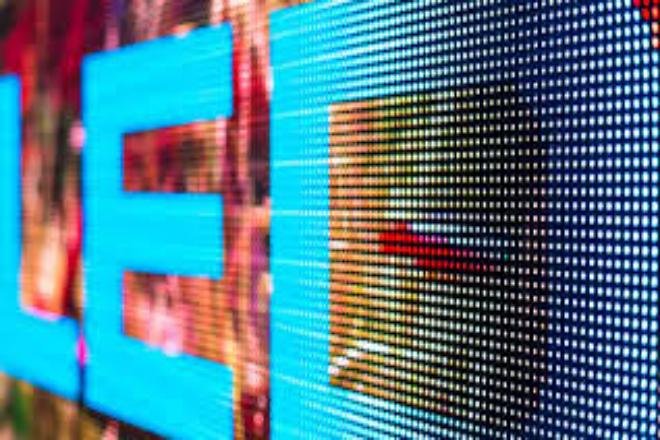
1) Cuestiones de costes
Para ser honesto, si quieres que la pantalla LED reproduzca el color con precisión, el costo no es bajo. Necesitas usar buenas perlas de lámpara LED y necesitas circuitos de control avanzados y sistemas de gestión del color. Todo esto se suma y el precio sube.
Al igual que cuando se compra un teléfono móvil de alta gama, además de la función básica de llamadas, también se necesita una cámara de alta calidad y un procesador superrápido, todo lo cual cuesta dinero. Lo mismo ocurre con las pantallas LED. Si se quieren buenos colores, hay que estar dispuesto a gastar dinero.
Debido a su alto coste, no todos los lugares pueden permitirse una pantalla LED de tan buena calidad. Algunas pequeñas tiendas o actividades pueden pensar que es demasiado cara y no pueden permitírsela. De esta forma, la popularidad de las pantallas LED es limitada y no todo el mundo puede disfrutar de un efecto de color tan bueno.
2) Dificultades técnicas
Aunque la reproducción del color de las pantallas LED se ha realizado muy bien, todavía hay algunos problemas que no se han resuelto.
Por ejemplo, la desviación de color, es decir, el color en la pantalla es un poco diferente del color original, y la deriva de color, es decir, el color cambia después de usarlo por un tiempo.
Esto es similar a lo que ocurre cuando se toma una fotografía: a veces, el color no es del todo correcto o la foto se descolora después de haber estado guardada durante mucho tiempo. Las pantallas LED también presentan este tipo de problemas.
- Impacto y solución:
Los matices de color y las variaciones de color hacen que la pantalla LED parezca menos real y afectan la experiencia de visualización. Para resolver estos problemas, los fabricantes también están tratando de encontrar una solución.
Pueden utilizar métodos de calibración más precisos para hacer que el color de la pantalla sea más exacto o desarrollar circuitos de conducción más estables y sistemas de gestión del color para hacer que la pantalla dure más y el color no sea fácil de cambiar.
Al igual que después de tomar una fotografía, utiliza un software para ajustar el color para que la foto se vea mejor.
3) Limitaciones del escenario de aplicación
- Diferencias de demanda:
Los requisitos de reproducción de color de las pantallas LED varían según el lugar. Por ejemplo, en las exposiciones de arte, el color debe ser muy preciso y no debe haber ninguna desviación; pero si se trata de una publicidad comercial, se puede prestar más atención al brillo y al contraste.
- Análisis de limitaciones:
En algunos entornos especiales, las pantallas LED pueden no ser tan adecuadas. Por ejemplo, en exteriores, cuando la luz solar es muy fuerte, la pantalla puede reflejar la luz y no se puede ver con claridad; o en lugares con mucha humedad, las perlas de la lámpara LED pueden verse afectadas y el color no es tan preciso.
Al igual que la pantalla de su teléfono puede no verse nítida cuando está al aire libre bajo el sol, o puede tener problemas si el teléfono se moja en agua, las pantallas LED también se ven afectadas por estos factores ambientales.
- Sugerencias de respuesta:
¿Qué debemos hacer? Los fabricantes pueden fabricar diferentes pantallas LED según las diferentes necesidades. Por ejemplo, para uso en exteriores, se utilizan materiales más brillantes y reflectantes.
Si se desea que el color sea especialmente preciso, se utilizan mejores tecnologías y perlas de lámpara.
Además, los usuarios también podemos elegir según nuestras propias necesidades. Si no se necesita un grado de reproducción de color tan alto, se puede optar por un producto más rentable. De esta forma, todo el mundo puede encontrar una pantalla LED que se adapte a sus necesidades.
4. Comparación exhaustiva y perspectivas futuras de la tecnología de pantallas LED y de pantallas tradicionales
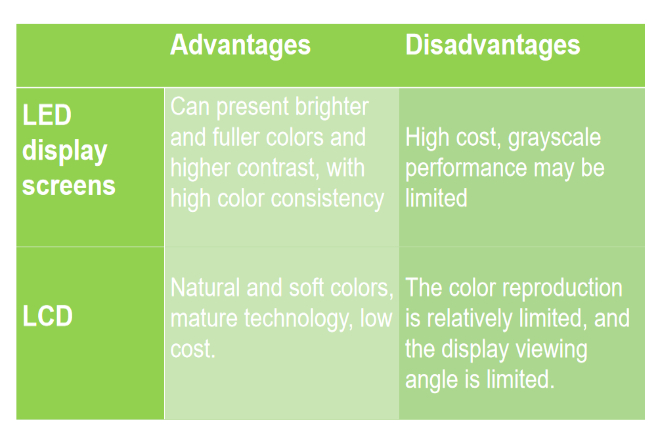
1) Comparación exhaustiva
1.1) Pantalla LED:
1.1.1) Ventajas:
- Alta reproducción de color:
Cada píxel de la pantalla LED puede emitir luz de forma independiente y puede controlar con precisión la relación y el brillo de los tres colores primarios: rojo, verde y azul, por lo que puede presentar colores más vivos y completos y un mayor contraste.
Esta característica hace que las pantallas LED sean excelentes en reproducción de color, especialmente adecuadas para escenas que requieren alta saturación de color y contraste.
- Alta consistencia de color:
Con el avance continuo de la tecnología, la consistencia del color de las pantallas LED también mejora constantemente, lo que hace que la pantalla sea más uniforme y reduce problemas como la desviación y el cambio de color.
1.1.2) Desventajas:
- Alto costo:
Para lograr una alta reproducción de color, las pantallas LED necesitan utilizar lámparas LED de alta calidad y circuitos de control avanzados, lo que aumenta el costo de fabricación.
- El rendimiento en escala de grises puede ser limitado:
En entornos con poco brillo, el rendimiento en escala de grises de las pantallas LED puede no ser tan bueno como el de algunas tecnologías de visualización tradicionales, especialmente en las transiciones de color y el rendimiento de los detalles. Puede producirse distorsión o falta de naturalidad.
1.2) Tecnología de visualización tradicional (tomando como ejemplo la pantalla LCD):
1.2.1) Ventajas:
- Colores naturales y suaves:
El rendimiento del color de las pantallas LCD es suave y natural, adecuado para una visualización a largo plazo y no causa fácilmente fatiga visual.
- Tecnología madura y bajo costo:
Después de años de desarrollo, la tecnología LCD se ha vuelto muy madura y el costo de fabricación es relativamente bajo.
1.2.2) Desventajas:
- Reproducción de color relativamente limitada:
En comparación con las pantallas LED, las pantallas LCD pueden tener una reproducción de color y un contraste ligeramente insuficientes, especialmente cuando muestran imágenes negras u oscuras; pueden producirse fugas de luz o distorsión del color.
- Limitado Ángulo de visión:
Aunque la tecnología LCD moderna ha mejorado enormemente el problema del ángulo de visión, la calidad de la imagen aún puede verse afectada en ciertos ángulos extremos.
1.3) Factores a tener en cuenta al elegir la tecnología de visualización
Al elegir una tecnología de visualización, debe considerar múltiples factores como el costo, el rendimiento y los escenarios de aplicación.
Por ejemplo, en exposiciones de arte de alto nivel o en producciones de cine y televisión, los requisitos de reproducción del color son extremadamente altos y es posible que prefiera elegir pantallas LED con mayor reproducción del color, pero con costos más elevados.
En algunas ocasiones, cuando los requisitos de reproducción del color no son especialmente elevados pero sí sensibles al coste, como en la publicidad comercial o en las pantallas de oficina habituales, las pantallas LCD pueden ser una opción más rentable.
Además, también se deben considerar los requisitos específicos del escenario de aplicación de la tecnología de visualización. Por ejemplo, en la publicidad al aire libre o en eventos deportivos a gran escala, la pantalla debe tener un alto brillo y un alto contraste para adaptarse a entornos con mucha luz, y las ventajas de las pantallas LED son más obvias en este momento.
En algunas ocasiones en las que se requiere una visualización a largo plazo y no se requiere particularmente la reproducción del color, como en salas de conferencias o aulas, las pantallas LCD pueden ser más populares.
2) Perspectivas de futuro
- Tendencia futura de desarrollo de la capacidad de reproducción del color
Con el avance continuo de la tecnología, se espera que la capacidad de reproducción de color de las pantallas LED mejore aún más. Por un lado, al optimizar la eficiencia luminosa y la consistencia de color de las perlas de la lámpara LED, se puede mejorar el efecto general de reproducción de color de la pantalla.
Por otro lado, el uso de circuitos de conducción más avanzados y sistemas de gestión del color pueden controlar con mayor precisión la emisión de luz de cada píxel, logrando transiciones de color más delicadas y niveles de color más ricos.
Además, con el continuo desarrollo de tecnologías como la inteligencia artificial y la realidad virtual, también se imponen mayores requisitos a la capacidad de reproducción del color de la tecnología de visualización.
Como portador principal de visualización de alta gama y experiencia interactiva, la mejora continua de la capacidad de reproducción del color de las pantallas LED ayudará a satisfacer las necesidades de estas aplicaciones emergentes.
- Aplicación y perspectivas más amplias
Las perspectivas de aplicación de las pantallas LED en el campo de la tecnología de visualización son muy amplias.
Con la promoción de políticas de protección ambiental verde y la aceleración de la transformación energética, las pantallas LED, con su bajo consumo de energía y alta eficiencia, se convertirán en una de las principales tecnologías de apoyo al concepto de verde y bajo en carbono.
En el futuro, las pantallas LED se utilizarán más ampliamente en edificios comerciales, hogares inteligentes, ciudades inteligentes y otros campos.
En el ámbito comercial, las pantallas LED se convertirán en una herramienta de visualización importante en industrias como la publicidad, las exposiciones y el comercio minorista, atrayendo a más consumidores al proporcionar imágenes de alta definición y reproducción de color.
En el campo de los hogares inteligentes, las pantallas LED se combinarán con varios sensores y sistemas de control para promover el desarrollo de sistemas de iluminación inteligentes y brindar a los usuarios un entorno de vida más cómodo y conveniente.
En el campo de las ciudades inteligentes, las pantallas LED servirán como una parte importante de sistemas como la divulgación de información, las instrucciones de tráfico y la seguridad pública, proporcionando soluciones más inteligentes y eficientes para la gestión urbana y la vida de los residentes.
Al mismo tiempo, con la optimización continua de la tecnología de producción, la reducción de los costos de materiales y la expansión de la escala de fabricación, el precio de las pantallas LED se volverá gradualmente más asequible, lo que permitirá que más usuarios disfruten de una experiencia visual de alta calidad.
En el futuro, las pantallas LED se convertirán en uno de los productos principales en el campo de la tecnología de visualización, liderando la innovación y el desarrollo continuos de la tecnología de visualización.
Conclusión
En resumen, las pantallas LED muestran el potencial de superar la tecnología de visualización tradicional en términos de capacidades de reproducción de color. Con su principio de emisión de luz único, amplia cobertura de gama de colores, alta consistencia y precisión de color, brinda a los usuarios una experiencia visual más realista y hermosa.
Sin embargo, las pantallas LED todavía tienen ciertas limitaciones y desafíos en términos de costo, dificultades técnicas y escenarios de aplicación.
Por lo tanto, no podemos decir simplemente que la capacidad de reproducción del color de las pantallas LED ha superado por completo la tecnología de visualización tradicional, sino que debemos ver las ventajas y desventajas de ambas en sus respectivos campos, así como su aplicabilidad y complementariedad en diferentes escenarios de aplicación.
Finalmente, si quieres saber más sobre las pantallas LED, por favor contáctenos.
